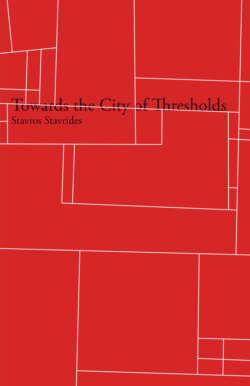Читать книгу Towards the City of Thresholds - Stavros Stavrides - Страница 17
The logic of red zones
ОглавлениеWhen Pierre Bourdieu insists that there is a distinctive “logic of practice,” which is different from the logic we employ to interpret practice, he stresses the inherent temporality of every meaningful social action (Bourdieu 1977). Revealing the “fallacies of the rule” that tend to reduce practices to cause-and-effect relations, he shows how practices make use of time intervals. Practices, as series of interrelated acts, are defined by their tempo, by the way they unfold in time, and the ways they employ and simultaneously reproduce socially meaningful distances in time. Anthropologically, “making use of time” means understanding how rhythms of practices ensure a strengthening of human social relationships and how individual or collective performances can be based on differentiating variations of dominant rhythms. The return of a gift, for example, establishes a variable rhythm of reciprocity that can affect contestable power relations. Ritual acts can in general be considered as communal manipulations of social rhythms, despite the fact that these acts often appear focused on natural rhythms.
Rhythm seems a promising concept to connect a theory of practice with a meaningful performance of time and space. We can borrow this defining statement from Henri Lefebvre’s “rhythmanalysis” project: “Every rhythm implies a relation of a time with a space, a localized time, or if one wishes, a temporalized place” (Lefebvre 1996, 230). Metropolitan experience can be understood as differentiated practices of habitation performed in distinct rhythms.
How can we understand places in which collective decisions are being negotiated (ancient agoras, post-1789 National Assemblies, modern forums, etc.) without knowing the rhythms of the assemblies, the connection of social rhythms with production rhythms, the interdependencies of these rhythms, and so on?
Using the concept of rhythm, we can understand the qualities and characteristics of public space that are created through recurrent social practices. Rhythmicality is a way of understanding the present and the future as being punctuated by defining repetitions. Space becomes a socially meaningful artifact in the process of being “temporalized” through inhabitation rhythms.
If we follow Lefebvre, there are two forms of repetition that define two major types of rhythm: cyclical rhythms and linear rhythms. “Cyclical rhythms” can be considered as the ways through which recurrent natural phenomena appear to obey laws of rhythmical repetition. These laws make them predictable and therefore socially usable. Cyclical rhythms have “a determined frequency or period” (Lefebvre 1996, 231). There is a tendency to identify these rhythms with traditional societies where social life is organized and understood as repeating itself. Social rhythms follow the rhythms of the seasons and their corresponding productive duties.
In his famous distinction between cold and hot societies—the former lacking the idea of history and therefore enclosed in a constantly self-repeating universe—Claude Lévi-Strauss considers rituals “a machine for the destruction of time.” Alfred Gell is perhaps more accurate in noting that in such societies “it is not time that is destroyed, but its effects” (Gell 2001, 27). Cyclical rhythms use the experience of time in a way that coincides with the image a certain society has of itself. Cyclical rhythms produce social artifacts. The inhabitants of cyclical rhythms do not merely pay attention to the passage of time and its effects, but they give it specific social meaning by connecting the recurrence of social acts with specific forms of social reproduction.
“Linear rhythms,” according to Lefebvre, are “defined by consecutiveness and the reproduction of the same phenomena, identical or almost at more or less close intervals” (Lefebvre 1996, 231). In other words, “the linear is routine” (ibid., 222). Regulated work rhythms (mechanical as in hammer blows or bodily, as in rowing) appear as linear rhythms that can be extended infinitely.
In modern societies, a concept of time connected with historical conscience can be attributed to a linear conception of time. This time is “empty” and “homogeneous” (Benjamin 1992, 252) because what defines it is the linear rhythmicality through which time is measured. The everyday experience of time regulated by clocks and routinized in measured, repeated acts, can only have quantitative historical differences. With this framework, we can speak of an alleged “tempo of history” speeding up.
In modern societies, the myth of novelty is offered as a substitute to the experience of routines. Rhythmicality is banished as restraining and anonymous, whereas originality appears as the true mark of identity. Yet, imposed working and living routines are methodically regulated. Imposed order in time and space is half-concealed behind a well-calculated randomness. In its prototypical form, this condition resembles the structure of the advertising message: you are urged to buy something you know is produced in massive numbers, by being convinced that it was created “especially for you.” Your identity is supposedly verified and created through this act of buying.
